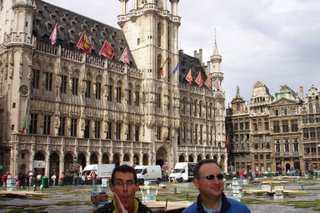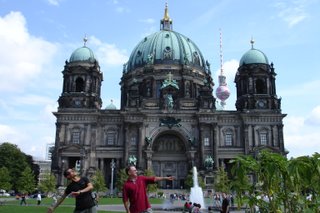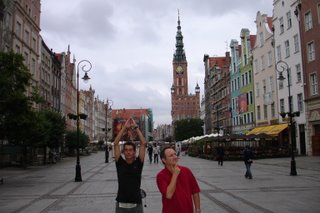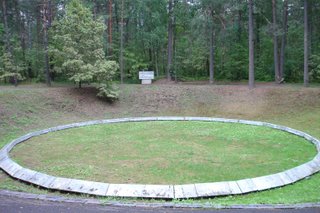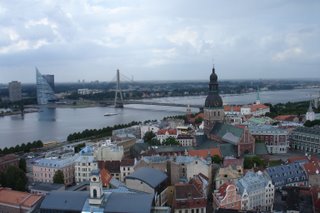

We did it!
After 91 days, 23 countries, 76 cities and 23,458km (half the circumference of the globe at the equator) we are back in Paris and ready to fly to Greece, having completed our Europe 2006 itinerary, exactly as planned and without incident!!!
Our total distance travelled includes 2,440km by rail and 720km by ship and 760km by foot!
We also "stopped over" in a further 40 cities/towns. Now we think we know how Ulysses must have felt after completing his epic journey as described in Homer's Iliad!!! We could not have done it without our brave little car - C3PO (first photo), who bore the brunt of most of the kilometers (second photo).
Here is a summary of the best and worst of out trip:
HOTEL VALUE: best in Albufeira, Portugal and worst in Amboise, France.
HOTEL FEATURES: best equipped was in Stockholm, Sweden and worst in Trieste, Italy.
HOTEL COST: cheapest was in Tallin, Estonia and most expensive was in St Petersberg, Russia.
RESTAURANT: best was La Gloria De Montana in Madrid, Spain and worst was who cares in Albufeira, Portugal.
DISH: best was the Valencian Paella in Valencia, Spain and worst was the Mixed Seafood Grill in Albufeira, Portugal.
CITY: best was Barcelona, Spain and worst Oporto, Portugal.
TOWN: best was Clisson, France and worst Aranjuez, Spain.
TOURIST SITE: best was The Prado in Madrid, Spain and worst was the Royal Palace in Aranjuez, Spain.
MEMORABLE STAY: best was Monterossa Al Mare, Italy and worst was Amboise, France.
MEMORABLE EXPERIENCE: best was the up close and personal tour and tasting of the Eric Garreau winery with Eric Garreau and worst was trying to find a hotel in Madrid.
HOTEL BREAKFAST: best was in Warsaw, Poland and worst was in Ljubljana, Slovenia.
EFFORT TO VISIT: easiest city to visit was Berlin, Germany and hardest was Moscow, Russia.
This officially concludes "In Search Of Euro-Trash 2006"!!! This is the last blog post as there will be no coverage of our time in Greece. John is back in Sydney on 10 September 2006 and Paul returns on 4 October 2006.
CONTACT IN GREECE: Paul can be contacted on his mobile and email but he will have limited access to email. John will NOT have mobile and NOT have email access. If you need to contact John, please call him at his relatives on +30 26960 34015. If you cannot speak Greek just ask for "Yianis Golfinopoulos apo Afstralia"! Best time to call is between 8-9am Greek time (4-5pm Ozzie time).
We would like to thank our fans and viewing public for their comments and patronage - we hoped you enjoyed the show! But wait - that's not all. Once we get back and coming to you hopefully in December 2006 is our full length feature documentary film and best of the best photo slide show - stay tuned for details via email! We will also announce the winner of "what is Paul looking for" and answer all your questions, especially "who took all the John and Paul photos"!
Farewell Europe 2006!




